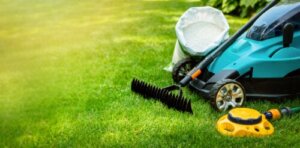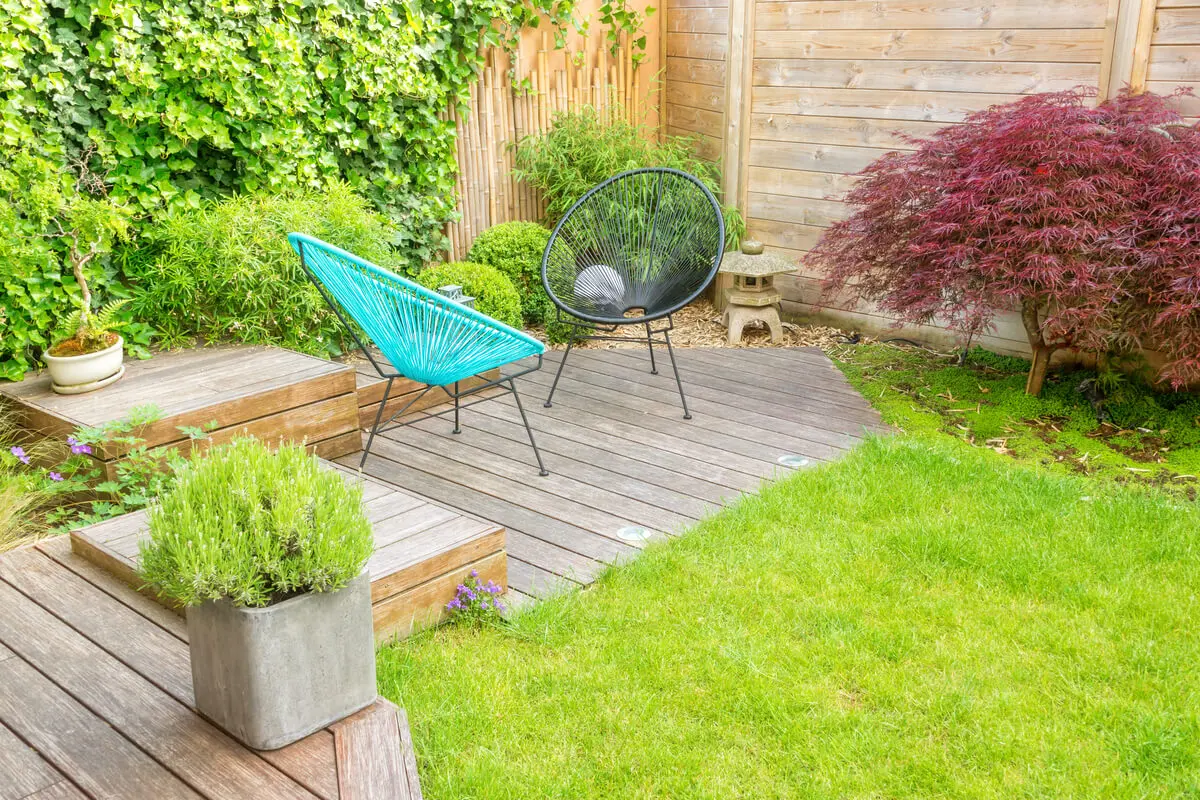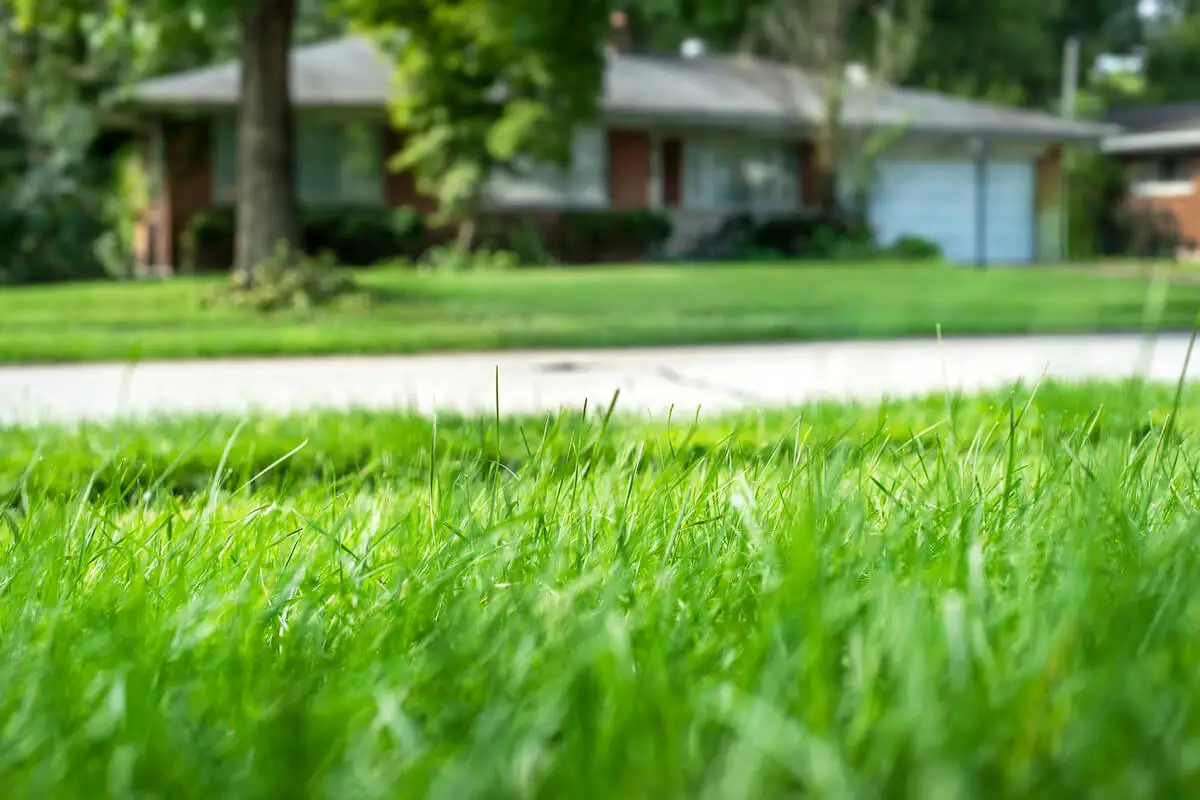Simple Steps to Maintain a Healthy Lawn in the Spring

Although the following gardening techniques to maintain a healthy lawn may seem generic, grass deserves a little more attention.
This is because, in the case of potted plants, depending on the season, you can take them out or shelter them at home. But lawns are always outdoors. We invite you to review tips to contribute to the growth and greenery desired in this extensive part of the garden.
Why is it important to keep the lawn green and healthy?
The lawn is a bushy grass, small and commonly graminoid, which covers the ground. This is what the Universidad Politécnica de Valencia reports, adding that this “lining” of the ground is a basic element in gardens and landscaping.
Keeping the lawn colorful is also a matter of aesthetics and visual appeal for the environment. It also contributes to the health of the other plants you grow. Thus, if the lawn is healthy, you avoid soil erosion by water and wind.
And if we go for the economic aspect, a green and well-kept lawn is a visual hook to sell a house. Who is not attracted by a beautiful garden? Then, it is worthwhile to inquire about what this element of nature needs, with the purpose of keeping it always healthy.
How to keep the lawn green and healthy?
The greenness of the ground cover will be maintained if you follow the steps below.
1. Fertilize
Lawns appreciate substances rich in phosphorus, nitrogen and potassium. As the Clemson University Cooperative Extension Service explains, this trio of components is primary for plant species. Also, if they are together, they are considered a complete fertilizer.
According to specialists, these micronutrients in higher concentrations do a good job. Similarly, fertilizers with magnesium, sulfur and calcium, in lower concentrations, bring positive effects to the lawn. The idea is that root growth is strong and that the grass retains a deep green.
From spring to summer, warm-season grasses that are actively growing should be fertilized. Cool-season grasses are best nurtured in spring and fall, otherwise they will weaken.

2. Remove thatch and weeds
Thatch is all withered grass that, in addition to disfiguring the yard, causes water stagnation and hinders air circulation, carrying possible fungal infections. You get rid of thatch by raking; in spring gently, in fall with a little more force.
As for weeds, you can pull them by hand or spray lawn weed killer. The University of California’s Integrated Pest Management Program argues that spraying herbicides helps keep weeds from germinating in the planting bed.
3. Aerate
Acute soil compaction does not favor grass. This is a natural process that can occur over time and its consequences are the inconvenience for the roots to receive proper hydration.
In turn, the difficulties derived from the lack of aeration are evident in the discoloration of the mulch. What to do if the soil in your garden is too compacted? Aerate!
There are machines designed to correct this defect. They open thousands of holes in the turf, so that water seeps through without problems.
The Consejería de Agricultura y Pesca refers to aeration as “aeration” that maximizes infiltration and moisture in the soil. To achieve this, it is possible to apply artisanal techniques or special devices, as well as the addition of a mulch made up of organic matter.
4. Moisturize
An extension of the University of Illinois specifies that the lawn needs at least 1.5 inches of water per week to look green and not stop its prosperity. They clarify that during the cool season a pause in natural growth is normal and that when it is warm the grass goes dormant.
Sprinkler irrigation systems are also common to support hydration.
5. Respect the height
Do not cut the lawn flush. This vegetative cover is made up of numerous plants that, in turn, consist of many leaves.
If you over-mow the grass, you will leave the soil more bare and exposed to the sun’s rays. The consequences would be dry leaves and plant stress. In cold seasons an exaggerated trimming would also hurt them.
The Spanish Association of Garden Centers suggests, through its magazine Verde es vida, not to cut more than a third of the leaf length, apart from considering the orientation, climate and frequency of watering before mowing the meadow. This is because in extreme conditions, such as cold or heat, the grass would suffer.
6. “Populate” the bare patches
The lawn is often the target of deterioration due to multiple factors; frequent stepping on it and pet urine are some examples. Thus, it loses its attractiveness and does not look healthy; at least, in the most crowded areas.
In order for the grass to be the star of your garden in spring, it is advisable to replace the visibly damaged areas with a fresh layer. Thus, there will be no brown or yellowish patches, unbalancing the green we are looking for. Also, the sowing of these mini-plots is done by seeds equal to the species you have at home.

Final note: Choosing the right lawn helps to keep it green and healthy
Keeping the lawn green and healthy also depends largely on the type of species and the conditions it meets. A publication of the Pontificia Universidad Católica Argentina points out that these conditions influence the ability to adapt to the climate, the resistance or support to trampling, and a uniform shade.
Because of this, it is opportune to inquire with the supplier of these plants about the kind that you will take to your garden. Also, if you buy without considering the environment in which the grass will develop, it is likely that it will not reach the desired vigor or greenness.
All cited sources were thoroughly reviewed by our team to ensure their quality, reliability, currency, and validity. The bibliography of this article was considered reliable and of academic or scientific accuracy.
- Biología y Botánica. Céspedes y coníferas. Biología y Botánica. Universidad Politécnica de Valencia. http://www.euita.upv.es/varios/biologia/Pr%C3%A1cticas/Cespedes%20y%20coniferas.htm
- Hablemos del césped. Pautas para el riego de jardines particulares. Hablemos del césped. Extensión de la Universidad de Illinois. https://web.extension.illinois.edu/lawntalk_sp/planting/watering_guidelines_home_lawns.cfm
- Monje Jiménez, R. (2006). Manejo de céspedes con bajo consumo de agua. Consejería de Agricultura y Pesca. https://idus.us.es/bitstream/handle/11441/39543/MANEJO%20DE%20CESPEDES.pdf
- Parracia, A. N. (2012). Césped: principales especies, manejo y métodos de propagación usados en parques y jardines [en línea]. Trabajo Final de Ingeniería en Producción Agropecuaria. Facultad de Ciencias Agrarias. Universidad Católica Argentina. Disponible en: https://repositorio.uca.edu.ar/handle/123456789/459
- Plomski, Robert., Shaughnessy, D. (2015). Fertilización de céspedes. Servicio de Extensión Cooperativa de la Universidad de Clemson. https://hgic.clemson.edu/factsheet/fertilizacion-de-cespedes/
- UC IPM. La guía de UC para céspédes saludables. Programa de Manejo Integrado de Plagas del Estado de la Universidad de California (UC IPM). https://ipm.ucanr.edu/TOOLS/TURF/SITEPREP/preweed.html
- Venegas, C. Cuidados del césped: cómo conseguir una pradera de foto. Verde es vida, 69, p51. Asociación Española de Centros de Jardinería. https://www.verdeesvida.es/tecnicas-y-cuidados_4/cuidados-del-cesped:-como-conseguir-una-pradera-de-foto_204
This text is provided for informational purposes only and does not replace consultation with a professional. If in doubt, consult your specialist.








